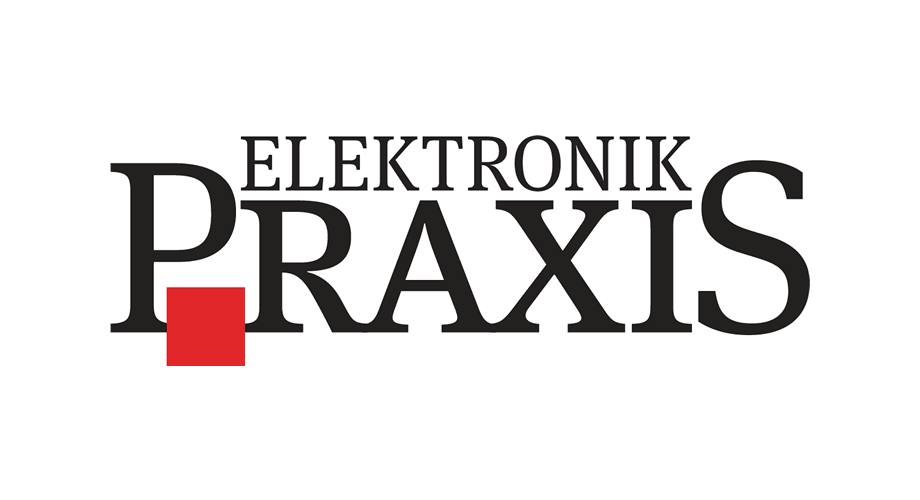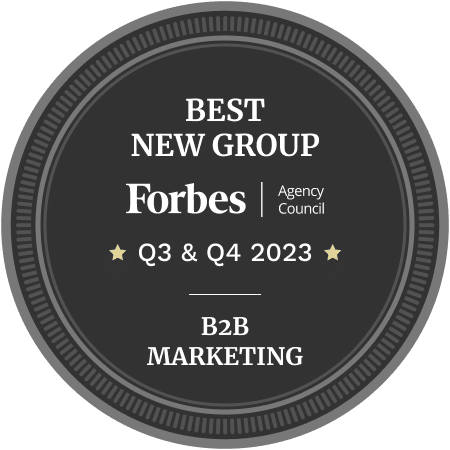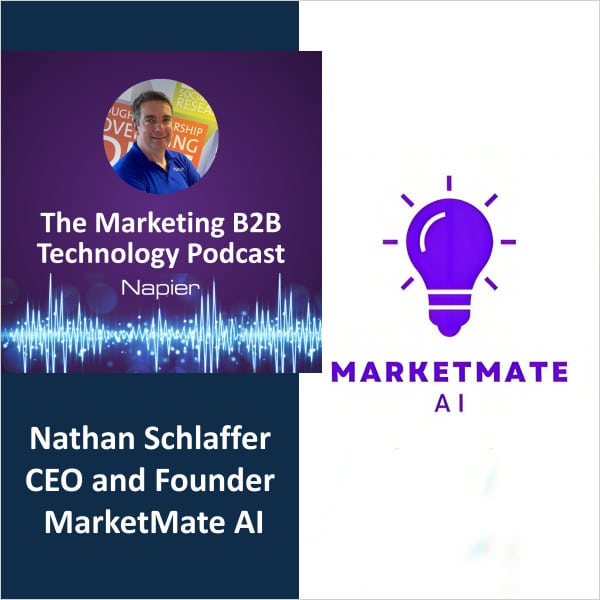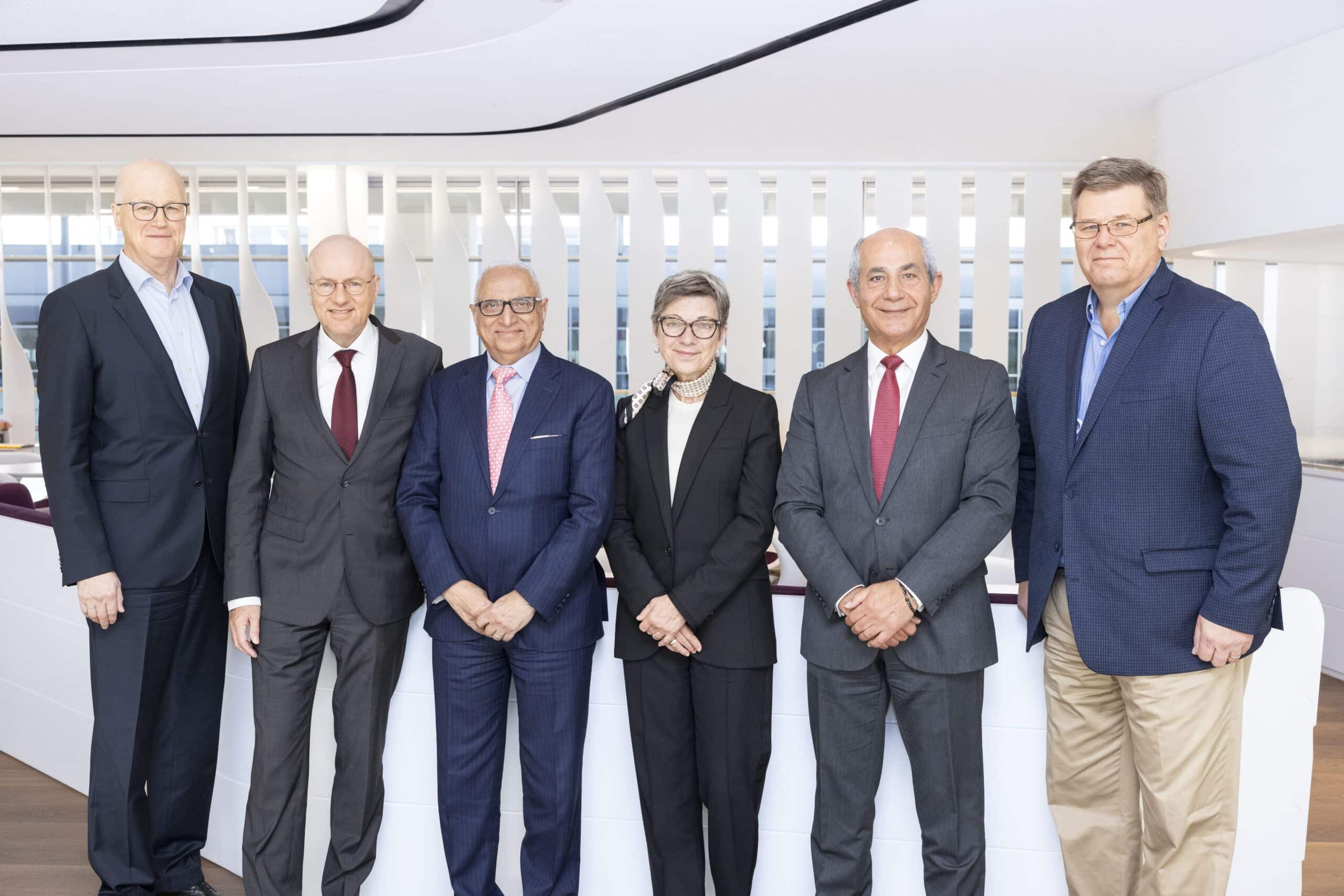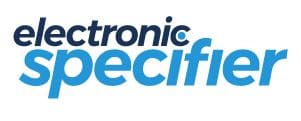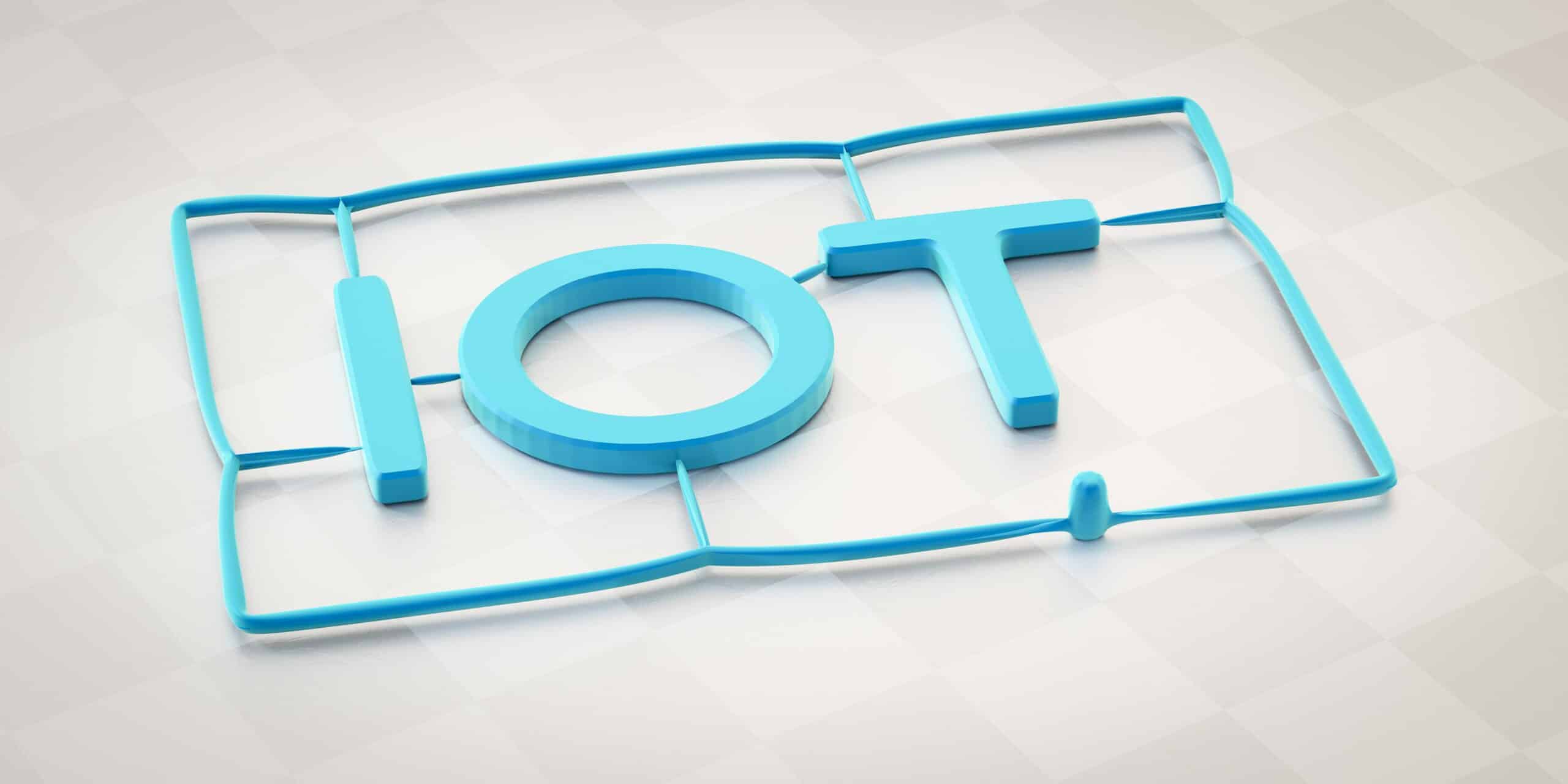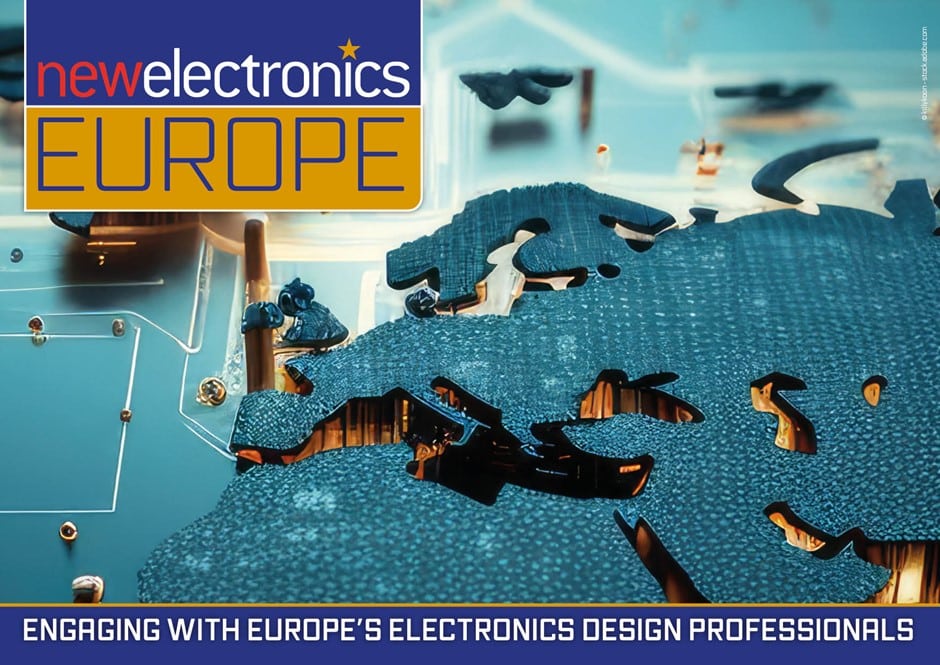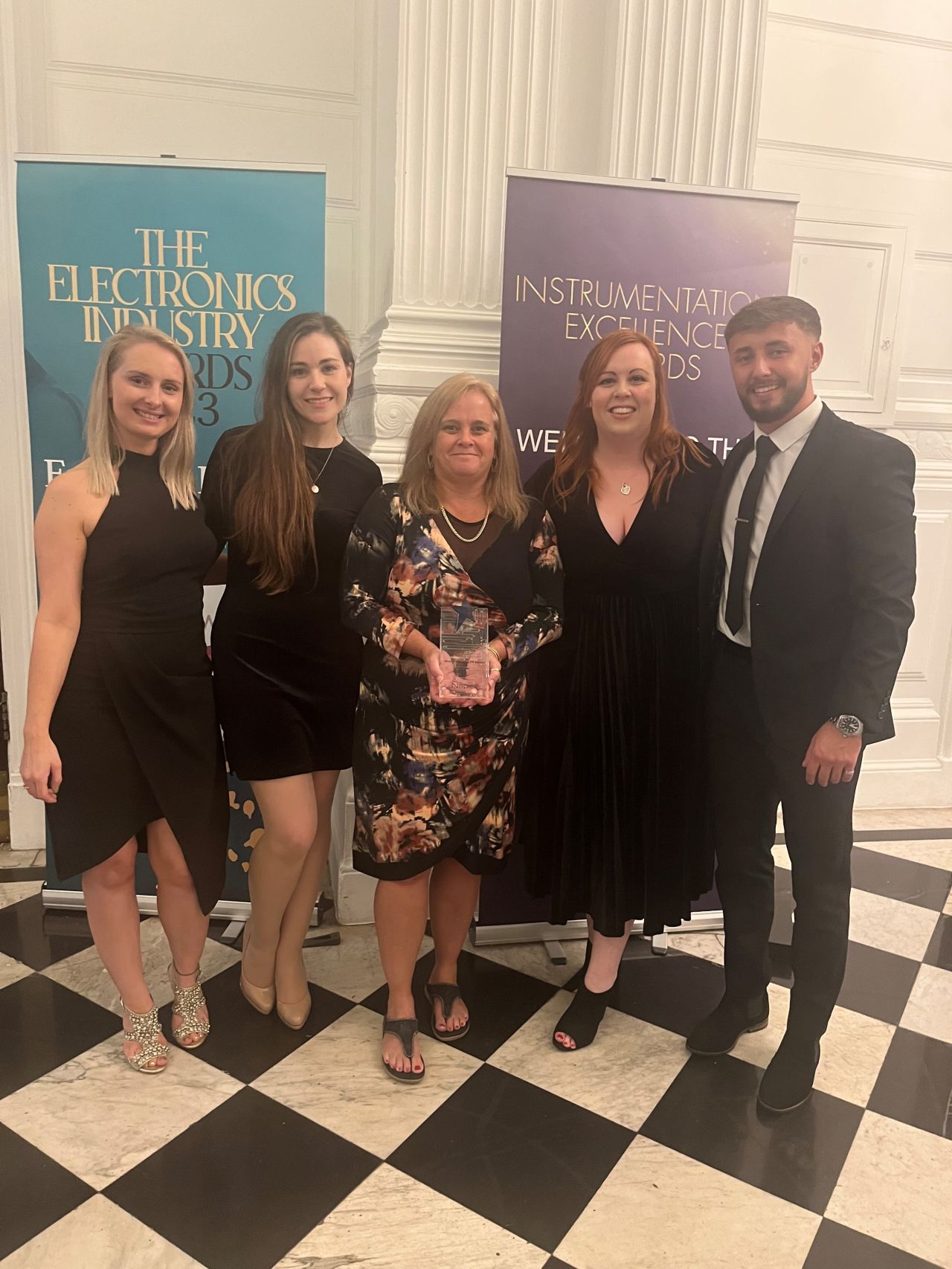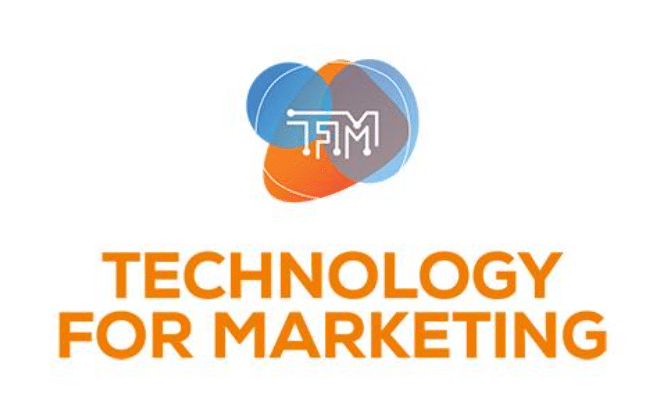Christmas Charity Donations From Napier
For the last few Christmases, Napier has made charitable donations rather than sending client gifts. From a select three, we invite our clients to vote for their favourite charity, of which we then distribute our donations in proportion to the votes for each charity.
So we were delighted to once again make our charity donations for Christmas in 2023, donating 41.5% of our pot to Médecins Sans Frontières, 21% to St. Wilfred’s Hospice and 12.5% to WWF.
We’d like to thank all our clients who took the time to vote and contribute to Napier’s decision.
Flash Memory Summit Announces Rebrand
Flash Memory Summit (FMS) has rebranded to reflect the ever-evolving landscape of memory and storage technologies. Relaunching as FMS: the Future of Memory and Storage, the change marks a recognition that the memory and storage industry is rapidly changing beyond traditional flash memory.
Driven by emerging advancements like artificial intelligence, machine learning, and high-performance computing, the memory and storage industry is undergoing rapid changes which has fuelled FMS's decision to rebrand.
The rebrand will change several elements of the event, including the conference and exhibition, which will cover a broad spectrum of storage applications, embracing not only flash memory but also emerging memory technologies that play a crucial role in the storage ecosystem.
Attendees can also expect to see enhanced networking opportunities and to view the latest products and solutions in memory and storage, with insights into future trends and technological breakthroughs.
CEO Kat Pate, said: “We are pleased to make it official by rebranding the event. We know this change will bring continued growth for FMS, and we look forward to welcoming new companies.”
The FMS: the Future of Memory and Storage event is due to take place on August 6-8th 2024.
We look forward to seeing the event take place under the new rebranding, and the great feedback we are sure it will receive from the industry.
Budapest Olympic Centre to Host InnoElectro 2024
This year, the publisher of ELEKTRONET will organise InnoElectro 2024 alongside the National Electronics Society of Hungary. The event will take place at the Olympic Centre in Budapest, on the 23rd-25th April 2024.
InnoElectro provides a platform for professionals involved in creating and manufacturing electronics-based solutions, from design houses to manufacturers and distributors, to discuss their knowledge, network and browse new partnership opportunities.
The event will host the IoT Live Show this year, as well as run the SMTA conference as part of the three-day event.
For the second consecutive year, the event will award the InnoElectro Grand Prize in recognition of the best products and electronic solutions presented at the show. Exhibitors and sponsors of the event can put forward their nominations.
We look forward to hearing about InnoElectro this year and the great insights from the industry.
Next Mobility and ELEKTRONIKPRAXIS Announce New Editor
Next Mobility and ELEKTRONIKPRAXIS has welcomed Stefanie Eckardt as its new Editor.
Stefanie is no stranger to the industry, and is an extremely experienced editor in the Automotive sector, having previously been Editor-in-Chief at Hanser Automotive for three years. Before this, she was also at WEKA for nine years, working on the Elektronik Automotive publication.
Congratulations to Stefanie on her new role!
New Semiconductor Publication To Launch Q1 2024
A new semiconductor magazine has been announced for 2024, titled Global Fabs. Due to launch in Q1 of this year, Global Fabs will be a new global semiconductor manufacturing website and digi-magazine.
The new publication will act as a dedicated source for information on semiconductor fabrication, providing the latest news, market developments, as well as technology and policy updates in the European Union, the USA and worldwide.
Here at Napier, we always love to see the development of a new publication available to the industry. With it focused on the semiconductor sector specifically, the publication is sure to cover some interesting stories. We look forward to the launch and reading the first copy very soon.
The Engineering Network Welcomes Industry Expert Sidney Hamilton-Williams
Industry sales expert, Sidney Hamilton-Williams, has joined the team at The Engineering Network (TEN) as Portfolio and Events Manager. Her new role will cover TEN's FoodManufacturing.Live specialist event, and its associated website FoodManufacturing.net.
With Sidney having previously worked at Western Business Publishing, TEN's Managing Director Luke Webster commented that Sidney "brings with her talents and skills that have been well recognised across the industrial publishing and events sector for many years, and is already acquainted with many of the industry leaders selling into the UK food manufacturing sector."
Congratulations to Sidney on joining the TEN team! We wish you all the best in your new role and look forward to working with you.
Forbes B2B Marketing Group Named Best New Group
At Napier, it's no secret that we are passionate about learning and sharing knowledge, especially within the B2B marketing landscape. We are always looking for different ways to contribute to communities, as we see the immense value these communities bring by members supporting each other in the sharing and building of knowledge across multiple B2B sectors.
This is why we were delighted to learn that the Forbes B2B marketing group has received the 2023 Q3 and Q4 Member Leader Award. Led by Napier's very own Managing Director, Mike has grown the community, with a focus on sharing his knowledge about the B2B marketing landscape and encouraging members to participate.
Congratulations to Mike and all those in the group, and good luck for the next round of the Member Leader Awards!
A Napier Podcast Interview With Nathan Schlaffer - MarketMate AI
Nathan Schlaffer, CEO and Founder of MarketMate AI, joined Mike to discuss his generative AI marketing automation platform that enables B2B marketers to connect with their buyer personas.
Nathan delves into Marketmate’s unique features, and how users can create buyer personas on the platform, which enable them to refine messaging and use generative AI which is tailored directly for the persona. He also shares practical advice on how to use AI to enhance marketing strategy and execution.
Listen to the podcast now via the links below:
- Marketing B2B Technology on Apple Podcasts
- Marketing B2B Technology on Spotify
- Marketing B2B Technology on napierb2b.com
About MarketMate AI
MarketMate AI is an AI marketing solution specifically for B2B. The software is unlike any other AI platform and is a marketing solution which tailors content for the clients wants and needs.
About Nathan
As the CEO and Co-Founder of MarketMate AI, Nathan is an advocate about the use of AI to connect marketing and sales. He brings ten years of expertise in aiding B2B SaaS firms in revenue growth and marketing team expansion.
Time Stamps
[00:42.00] – Nathan discusses his history and MarketMate AI.
[05:02.00] – Find out how to use AI to generate content for marketing campaigns.
[09:37.00] – Nathan discusses creating buyer personas with MarketMate AI and refining messaging.
[14:52.00] – Learn how MarketMate AI can be used for branding
[15:50.00] – Nathan shares the story behind MarketMate AI.
Quotes
“If you can take an AI model and train it on that market knowledge and insight, imagine the productivity gains you can get for having a new hire learn from the AI and have it write content.”
Follow Nathan:
Nathan Schlaffer on LinkedIn: https://www.linkedin.com/in/nathanschlaffer/
MarketMate AI website: https://www.marketmateai.com/
MarketMate AI on LinkedIn: https://www.linkedin.com/company/marketmate-ai-llc/
Follow Mike:
Mike Maynard on LinkedIn: https://www.linkedin.com/in/mikemaynard/
Napier website: https://www.napierb2b.com/
Napier LinkedIn: https://www.linkedin.com/company/napier-partnership-limited/
If you enjoyed this episode, be sure to subscribe to our podcast for more discussions about the latest in Marketing B2B Tech and connect with us on social media to stay updated on upcoming episodes. We'd also appreciate it if you could leave us a review on your favourite podcast platform.
Want more? Check out Napier’s other podcast - The Marketing Automation Moment: https://podcasts.apple.com/ua/podcast/the-marketing-automation-moment-podcast/id1659211547
Transcript: Interview with Nathan Schlaffer - MarketMate AI
Mike: Thanks for listening to marketing B2B Tech, the podcast from Napier, where you can find out what really works in B2B marketing today. Welcome to marketing B2B technology, the podcast from Napier. Today I'm joined by Nathan Nathan Schlaffer. Nathan is the CEO and co-founder of MarketMate. Welcome to the podcast, Nathan.
Nathan: Thank you, Mike. Excited to be here. Thank you for having me.
Mike: It's great to have on the podcast. I mean, we always like to start off by finding out how people got to the position they are today. So can you give us a little bit of background? Bit of a potted career history?
Nathan: Yeah, sure. So I first started out in marketing, you know, 14 years ago, is my first job. And I fell in love with technology and storytelling. So throughout my life, and specifically, over the past 10 years, I've really focused on B2B marketing, and technology companies like software companies, networking companies, and telecommunications companies. And one thing I realised as I was at B2B companies is a lot of the problems were the same is, hey, how do we create consistent messaging across our company? How do we align sales and marketing around a concept of value propositions? And how do we execute on a content strategy so that we can grow our demand generation and attract leads and high quality leads that result in opportunity? So my passion has really been at the intersection of technology and B2B marketing. And that's why I started this company market mate with my colleague, David is we we were so excited by chat CBT and the prospect of automating one of the day to day things that marketers do. But we realised that Trump engineering is hard. It's like an art and a science and you don't always get the output you want on the first ground. So what we wanted to do was, essentially make it easier for people to automate entire marketing projects without having to learn how to prompt so we created a generative AI platform market made a AI that does just that.
Mike: So I know people who've played with chat GPT, you know, sometimes you ask it to do something as magic Other times, you have to work really hard. So I totally get that issue around prompt engineering. You say you're a generative AI company for B2B marketing? Can you just tell us a little bit more about the functionality of marketing like what it actually does for marketers?
Nathan: Yeah, so we have a four step framework that we follow for marketers. And we use a handy acronym we call lead. And we call it the buyer centred AI framework. And we start with a company's buyer personas, much like when we're onboarding a new marketer, we teach them about who our target audience is, what job titles they have, what their pain points are, what motivates them what their KPIs are, how they measure success. So we take an AI model, and we train it on your buyer persona. So now it understands your customer pain points. It understands their needs, and it speaks your customer language. Now after we train an AI model on your persona, then we use AI to help create value propositions for your products to help create product positioning statements. So how do we differentiate your brand or your solution from every other solution on the market? What makes you unique? So following that lead framework, it's learned your buyer persona, it's enhanced your messaging, and now it knows your messaging. Now, it's ready to automate. And that's the eighth part automate your content development. So one of the big qualms we've heard with AI generated content is it just sounds artificial, like, No, it's not speaking my customer language. So we have an AI model that knows your customer language knows your value proposition. Now we can craft press releases for you. Now it can write blog posts. Now it can create ads that will really resonate with your audience and generate higher quality leads. And then the final step in the process is called drive sales enablement with guardrails. For CMOs and B2B Marketing Leaders. One of the things that we've encountered is great, I have a new sales rep, but they don't understand my target market. They don't understand my value proposition. So how do I onboard them quickly so they can close more deals? So what we've done is we've taken market made and trained it, how to write prospect emails, how to create an elevator pitch, how to ask good qualifying questions to identify needs and pain points with your prospect. So we call it drive sales enablement with guardrails, because we're making sure that the content and the emails and the sales communication is aligned with your company's messaging and tailored for your buyer persona. So that's essentially in a nutshell how market mate works.
Mike: So that's really interesting. So it sounds like you're doing something a little bit different to, you know, some of the other products like writer and Jasper, who let you feed content, but they don't actually train the model on your particular audience, for example. I mean, can you just explain a little bit more about what you're doing that's really unique and maybe they a bit deeper into how you do it. Absolutely.
Nathan: So you hit the nail on the head, Mike is Jasper writer and some of those, what we call point solutions. Just focus on, tell me what topic you want to write about. And I'll write a blog post for you. But without the proper context on who your audience is, what their needs are, maybe what some of the market trends are in your industry, for example, and I'll use this as an example to explain how we're working with a company called player zero, which is a product intelligence platform that helps take customer feedback and prioritise product releases based on what customers want and what features they desire. So one of the things that we did for them is first, we started by creating a buyer persona, so they target product management. So we created a persona called Victor, the VP of Product Management, who's concerned about product releases, he's concerned about the business success of product launches, who is concerned about aggregating customer feedback and using that to inform roadmap decisions. So we create that persona. Now his goal a player zero, and this is speaking with Max, he's the head of product at player zero. Now he has a big product launch. So he wants to design a press release to make a big splash in the market. He wants to write a blog post, he wants to create sales collateral, like a one pager that describes his value proposition. So what we did then is we use market maker to say here's the buyer persona, Victor, the VP of product, generate content ideas for top of funnel, middle of funnel and bottom of funnel. So across the customer journey, he has content to educate them on what players there is consideration content to say, Hey, why are you better than other alternatives and decision content, say, Let's book a demo call. So we essentially use market mate. And we press this button called generate content ideas, and a generated bottom. And then like a menu, you choose what content you want. And then you press WRITE content for me, and it generates a campaigns worth of content for his product launch in 20 minutes. So it's really a game changer. I've had some customers say, you know, instead of spending weeks generating content, this gets us 80% of the way there, and it's 20 minutes. So we're really doing something different and unique than other writing platforms in that we're understanding your audience and training an AI to not sound artificial.
Mike: I mean, that sounds great. Presumably what you're doing, if you're using I mean, I guess you're using the GPT blush language model or something, and what you're doing is trying to customise it. Is that right?
Nathan: Right, so that we have several large language models on the back end that are powering market mate one is GBT, we're also using Google. And we're using Cloud to from anthropic, which is one other one of the widely used platforms. And the reason we use several is one, we don't want to be too dependent on one AI platform, we saw some of the drama with open AI and kind of the risks of being on one platform. But then another reason as well is different platforms are better for different purposes. For example, jet, GBT is great at short form contents. Cloud Two is better for marketing recording, because it can ingest, you know, 100 pages worth of content, if you upload a marketing report, or a research report and say summarise some insights from my white paper, it can do it for you. And then Google is better. In other things, it tends to produce more grammatically correct tax, it's better at translation. So different API's have different strengths. So we're trying to combine the best in breed technology in a single platform. So as a marketer, you don't have to sort through all of the endless tools, tools on LinkedIn, or hoard all these prompts, you can work with market mate. And we don't require prompting, we just have form filled. So let's say you wanted to create a buyer persona. So you would describe your product in plain English. And in a text box, you describe your customer pain points, and then it would write the persona for you. So you don't have to prompt that's the big thing is we're trying to be user friendly for non technical marketing books.
Mike: That makes total sense. Yeah, you did mention something really interesting. There. You talk about translation. So are you generating content in multiple languages?
Nathan: Yeah, so we translate content across 132 different languages. One thing I want to also caution the audience is language translation and localization are two separate things. So while we do translate, we also suggest having someone localise it, who understands the cultural meaning of budget translate up into, but we do do language translation as well.
Mike: Yeah, I totally get that localization Americans and Europeans talking about football, we're talking about two completely different things. You know, it's the easy example. But but one we always get to. So now that that makes a lot of sense. And so I want to dig deeper, because I think one of the real differentiators you've got is the way that you're learning about buyer personas. So tell me a little bit more about what you have to do if you want to create Victor VP of product or any other buyer persona.
Nathan: Yeah, so we have essentially three inputs that come from the marketer. So the first is your product or service describing your product or service in a sentence or two, for example, player zero was a product intelligence platform that helps speak as a product have a single source of truth for all their customer data. So having a short description of the value of your solution and what problem you solve. The second input is really, what are my customer pain points? So what are the challenges that you solve for so if you're a software solution, often what we see is manual processes or lack of integrations, and then maybe it's, Hey, I want to be able to do more with less. So we describe the pain points. And then we have this context window where essentially, the user can copy and paste the job title that they're targeting, they can copy and paste the tech stack information, maybe you only target people that use this ERP system, for example. And then the AI takes that context, and then creates a essentially a psychological profile of your target buyer persona. What's their name, job, title, income, projected income. And then here's some of their pain points, motivations and KPIs. For Victor, the VP of product, for example, you know, one of the KPIs was on time product releases, or am I meeting my revenue targets for the product products that I'm launching. So you can, you can essentially have that. And then one wonderful thing about market mate is you can use it to refine the buyer persona. So let's say you had a customer interview, or you have a win loss survey that you publish, and you click some insights like, hey, you know, Victor, the VP of product is really concerned about x pain point rather than Y pain point. Well, you can modify that persona and say, emphasise X pain point. And now you've refined it. And then it integrates with Google Drive, and Microsoft SharePoint. So you can collaborate with your peers and share your buyer persona across your organisation.
Mike: You also talk about understanding the customer's language and to give the example of a VP of product. I mean, their language is very different if they're a VP and a software company versus a VP of product and say, somebody's making motors or something like that. So how do you really dig down into that customer language and, and train the model on how to speak like the customer?
Nathan: Absolutely, that's, that's a great point. And I think part of it is understanding some of the key words that your audience uses, for example, VPS are much more ROI Focused, you know, tend to be more decision makers. And users like software engineers are more technical. So maybe you need to talk about API's and SDKs. And all that terminology that software engineers use. And then maybe your champion is someone that uses another language that so what we do is capture that in the buyer persona, and also your messaging. So we have market make can create your buyer persona that uses customer language, how they describe their pain point. So it remembers that. And the second part of it is when you create your messaging, so there's essentially three components that market meet helps with one is your brand architecture, how do I need my products? That's a challenge with many organisations and a consistent and systematic way. And then after that product positioning, so how do I position my product for success against the competition? And give some market context? So market mate takes inputs about your market landscape? So what are some of the trends in my market that are relevant to my product? What are some of the alternatives that that customers can choose between? to me like maybe if it's player zero, they're using Excel or some other manual way to collect feedback? And then what makes us better? What are sources of competitive advantage. So the system essentially takes those inputs and creates a positioning statement for your product or service, what differentiates you for which audience and in the market context, and then it takes your buyer persona, and then when it's writing content, it's always considering that customer language, it's considering the market context. And I think that's the big thing that's missing with AI tools out there as they lack the context of your audience of your market of your customer language. And that's essentially what marketing does is it uses your inputs and saves it has memory of, of your customer language.
Mike: So that's really interesting, because you talk about this effectively four step kind of process that you've gone for four different elements, kind of each step is needed to almost to teach the next step what to do. Is that Is that right? Is that how it works?
Nathan: That's right, yeah. So you essentially lay the foundation with your buyer persona. So the first two elements, learn your audience, and then enhance content and enhance messaging, you need those two steps before you're ready to develop content. And you can almost think of an analogy of hiring and onboarding and a B2B marketer is before they can write content, they have to know who they're targeting it to know your audience. And they also have to understand your messaging is how should I speak about the benefits and features of your product or solution? Before you have that foundational knowledge you're not going to be really effective isn't a marketer and we've essentially have an AI mimicking a human being and In how it learns. And another advantage is one constraint we've seen in many, especially growing software companies or technology companies is they have specific subject matter experts with tribal knowledge. And that person can't be everywhere at once they can't review every piece of content, they can't train every new hire. So if you can take an AI model and train it on that market knowledge and insight, imagine the productivity gains you can get for having a new hire, learn from the AI and have it right content. So we're essentially breaking down barriers as well and knowledge gaps across the organisation with AI. And that's why our mission as a company is really to align Sales and Marketing for revenue growth and increase productivity, because that's a barrier we see in many companies is, especially as you're scaling is misalignment between sales and marketing.
Mike: And that's interesting, because I think your co founder, he's more from a sales background removed from marketing. Did you get together and find out that this was a really good idea? And then then Trump promote it? Or did you hate each other before and realise you're doing it wrong?
Nathan: We were in the trenches struggling, like many marketers, where we had a big product launch. And we had to develop top, middle and bottom of funnel content. And we were kind of in this long brainstorming meeting for an hour and a half and back and forth. And we're like, what if we can have ai do this for us like, and both of us were Marvel fans, so we liked kind of like Ironman and how we had a virtual assistant Jarvis. Pretty cool. If we had one for marketing, that, that'd be pretty awesome. So we went on this journey to build it together. And that's how we got started.
Mike: That's awesome. I love that story. I'm gonna think of a bit into where I think people have tried you to use AI and maybe even less successful. And around branding and messaging brand names and messaging seem to be something where you can put prompts into chat VBT, you can get brand names and messages that actually sound quite good. But then when you do it this again, with a similar but slightly different scenario, I think a lot of people have seen the same or very similar messages and brand names come out. So how to avoid this kind of, you know, I guess, trend towards the sort of average brand name and the average message for a particular market, which I think with some of the more generic platforms, you do see?
Nathan: Yeah, great, great question. I think one of the reasons or root causes for the similar outputs as they're not using different frameworks for naming, it's essentially using the same framework, and often guesswork. So what we've done with market makers, we've trained it on some of the most commonly use brand architectures or consistent ways of naming products. One way we trained it is we've trained it on the branded house framework, which is imagine Apple the start every product name with Apple, Apple, iPhone, Apple iPad, essentially reinforcing that master brand value. So we've trained it, hey, this is how you create a master brand, or branded house framework. And then we have another framework that we call branded house. So you can think of the Procter and Gamble as an example where they have Charmin toilet paper, right bounty, paper towel, you have different names for each sub brand. And that has its advantages. One is, you know, if one brand succeeds, the master brand is hey, the parent brand is reinforced, you're strengthening your parent brand. For that house of brands, each brand is separate. So if one brand tanks, the other ones aren't affected, it's a bit of a risk management thing. So we've trained it on multiple brand frameworks. So you essentially select which framework you aren't you enter details about your products, describe your master brand, using boilerplate language. And then it outputs a different naming convention for you based on your selection. So we give people options. And I think it's important as well to train the AI and lead it on to theory or some common naming framework. So it knows how to create a brand architecture versus just guessing. Because I think that's where the where the trouble comes, is in everything sounds the same as when you don't have a framework.
Mike: I love that I love the way that you've built that, that structure, that philosophy of how people name things into the product, because I think that's quite hard to do. Just sat in front of chat GPT and try and explain in a single prompt, or even multiple prompts, how to do that. So that makes a lot of sense. Absolutely. You talk about helping marketers drive strategy. I mean, obviously, we've talked about case study where you've generated content and messaging and things like that and understood a buyer persona. Do you have an example where people have actually built a strategy using market moat?
Nathan: Yeah, yeah. So top of mind, and I should describe kind of the landscape, at least in the market is a lot of companies, technology companies are cutting staff. They're under resourced. They have aggressive goals. And the goals are less focused around just plain revenue and more around profitability. So how do I generate more leads with less staff? You and convert more deals and opportunities in shorten sales cycles. So how we help with strategy is, let's say your strategy is you want to capture a certain vertical that you're going after the new year, we'll help you create the buyer personas will help you create the foundational messaging, and then help you create the campaign content pretty rapidly. So rather than taking months to essentially pivot your strategy, and get your go to market plan together, market mate can help you execute that plan in days rather than in months. And then part of it is as well as let's say your strategy is to pursue that vertical, maybe you need to hire a new sales staff. Or maybe you need to train your existing staff on who are the buyer personas for that market. You know, what, what's my value proposition? What's my elevator pitch? What questions should I ask if I'm on a call or in a customer meeting to uncover needs or pain points. So what we can do is help you enable your sales team with email sequences, sales pitches, the right questions to ask, using AI. So AI is essentially helping you do more with your existing staff and achieve your goals faster. If you're approaching a new market, for example, or you just want to expand and you don't have the budget marketing budget to achieve your goals.
Mike: That makes a lot of sense. You've talked about all sorts of applications and a number of industries. I mean, is this somebody that market makes designed for a particular industry or company size? Or where do you think the sweet spot is?
Nathan: Yeah, I think definitely B2B companies, that's kind of a prerequisite to find the most value of market makers, it's tailored for B2B. The second is companies that either have one marketing manager that's overwhelmed, or a team of marketers, and they're using chat GBT here and there but kind of, in different ways, you know, marketing is using it for to write a blog post sales is using it to read an email, wanting some sense of alignment and control over message consistency, B2B software companies have found a lot of value from this. And just to name some of the markets that we've seen companies find value from market may, FinTech, transportation Software as a Service, these tend to be companies that can really use marketing, manufacturing, because you have a highly technical product. And maybe marketers that are great at marketing, but don't quite understand your buyer personas. So this can essentially accelerate the process of your marketing and improve the effectiveness of it.
Mike: You mentioned, like, you know, fairly small companies with maybe one overstressed marketing manager. Does that mean market may actually is not an expensive product?
Nathan: Yeah, so we are less expensive than 90% of the enterprise software solutions out there, we trying to position ourselves as a disruptive new technology that's accessible. And there really hasn't been a technology like this that has existed that can learn your persona as a content. So we're really aiming to make it as accessible as possible for our audience.
Mike: That sounds great. I'm aware of the time I mean, I think we've we've already overrun. So we have a couple of questions, we always like to ask guests. And the first is what's the best bit of marketing advice you've ever been given?
Nathan: By and large know your audience? That's actually the impetus, why market rate is no, you know, what problems keep them up at night? What are they focused on what motivates them, because to build a brand and to build a marketing campaign, you really have to be a storyteller and put yourself in the audience's shoes and say, hey, I can help you with with what you're trying to do and what your goals are. So that that's my biggest advice is know your audience.
Mike: Sounds like good advice. The other question we ask is, what would you tell a young person who's thinking of marketing as a career? Or are you going to put these people out of job?
Nathan: Oh, yeah, our philosophy on AI is AI isn't going to replace people, but people who know how to use AI will replace people who don't. So definitely would encourage people to get ahead on understanding AI and its implications for marketing. But for a young marketer, the advice that I would give is really get to know yourself is What are my passions? What are my talents, marketing has evolved in amazing ways. And that there's so many sub domains of marketing, there's demand generation, that focus on getting leads is product marketing, where I came from, which is more messaging storytelling, understanding the customer pain points and creating differentiation for the company. And then there's also digital marketing and SEO, that's more analytical and market research. So what I would suggest is start to take a scope of yourself, you know, what are my skills? What are my talents? What am I passionate about? Are you more analytical, maybe marketing operations or market research is better for you? Are you more creative? Do you like design? Maybe a creative department? Can you rule are you more of a storyteller like me, Product Marketing could be a good fit for you. So try a lot of things. Experiment, know yourself and take your time. brilliant
Mike: advice. I mean, I actually still In my career as an engineer, so I'm definitely on the data side, and the guys in our studio will absolutely tell you, I am never going to be a designer. I'm never one of those creative people. So I think that's really good advice. I really appreciate your time. Nathan, I feel like we've only kind of skimmed the surface. Is there anything you feel we've missed, or something else we should have mentioned about market mate? Or one of the features that perhaps we should have covered?
Nathan: Yeah, thanks. Thanks for asking. I think we've covered the main basis. But what I would encourage is, if anyone is curious and wants to continue the conversation, you can always visit our website at www.marketmateai.com. And we'd love to continue the conversation or follow us on LinkedIn.
Mike: In terms of how you do that, can people get a demo? Or how do people learn a bit more about the product? Absolutely.
Nathan: So we can set up a demo for you on our website, we have a demo request form. Or you can connect with us on LinkedIn and message me personally, and I'd be happy to set you up with a demo and consultation to see if market makes a good fit for you. But overall, like we're accessible, we love talking about AI. This is our passion. And we're marketers who created an annual product versus engineers who you know, creating a product. So we come from your point of view, we are the customer, so we would love to continue the conversation.
Mike: I don't think there's a better way to end the podcast than that. So, Nathan, thank you so much for your time. I really appreciate it.
Nathan: Thank you so much for having me. Glad to be here and Happy Holidays to all your listeners.
Mike: Thank you. Thanks so much for listening to marketing B2B Tech. We hope you enjoyed the episode. And if you did, please make sure you subscribe on iTunes, or on your favourite podcast application. If you'd like to know more, please visit our website at Napier B2B dot com or contact me directly on LinkedIn.
Partnership Expansion: Messe München And SEMI Strengthen Electronics Network In India
Messe München's electronics network, which encompasses top-tier trade fairs like electronica and productrionica, is strengthening ties with SEMI, the global semiconductor association in India.
The agreement, signed during productronica and SEMICON Europa 2023 in Munich, supports the Indian government's initiative to strengthen the semiconductor ecosystem in India.
Dr. Reinhard Pfeiffer, CEO of Messe München commented "The Indian market is becoming more and more important for global manufacturers who want to further diversify their supply chains. I am therefore all the more pleased that we are expanding our successful cooperation with the global industry association SEMI, which already successfully organizes SEMICON Europa in parallel with electronica and productronica in Munich, to include SEMICON India. This is the logical consequence of our strategic partnership."
SEMICON India will be running alongside productronica India and electronica India from September 18th-20th 2024, making it the largest meeting place for ideas and innovation in the electronics industry in Southeast Asia.
It's always fantastic to see the reach of the electronics industry continuing to grow globally, and we look forward to seeing the innovation and growth this collaboration will bring.
Electronic Product Design & Test To Launch New Showcase
Electronic Product Design & Test is launching an annual Products of the Year showcase, which will see the most notable product highlights from the previous 12 months featured in the magazine.
The first showcase will be featured in the December 2023 issue and will cover the top 20 products of 2023, which will span from digital ICs, communication chips, interconnects, board level hardware, power devices, electro-mechanical components, optoelectronic devices, and test instrumentation.
Selections for Products of the Year are based on key criteria, including the disruption the products have caused to the existing market, the ability they have to open new market opportunities and the positive impact they have provided society.
It’s great to see Electronic Design Product and Test celebrating products from across the sector, and we look forward to seeing what will feature in the first showcase this December.
Electronic Specifier First Women in Technology and Engineering Event a Huge Success
On November 2nd, 2023, Electronic Specifier hosted its first Women in Technology and Engineering event. The evening, which offered attendees networking opportunities and valuable discussions, was a testament to those attending and nominated.
The event was led with a keynote by Ama Frimpong, the Head of Development at 52 North Health. She discussed professional resilience and personal fulfilment in the face of career challenges. Additionally, a panel was curated by Paige West, the editor of Electronic Specifier. The panel, which included tech leaders from diverse sectors, reflected the call for a more inclusive, diverse and versatile industry.
Paige West said: "It was a powerful gathering of shared aspirations and grounded expertise. We’ve ignited a dialogue that not only reflects the current state of women in tech but also paves the way for a more inclusive future. This is just the start, and we look forward to growing this community through our content and future events."
Electronic Specifier has also recently promoted a Data Science student, Beth Floyd to the position of Marketing Associate. In her new role, Beth will be the main point of contact for manufacturers who wish to be listed on EDS and EDI.
Here at Napier, it is great to see a fantastic celebration take place for Women in Technology and Engineering and we look forward to seeing future changes towards inclusivity in STEM.
Smart Cities Electronics Launches New Magazine
Currently just a website, Smart Cities Electronics is introducing an e-magazine, with the first issue due to go live in February/March 2024.
Published bi-monthly, the magazine will feature expert analyses, articles and product highlights, as well as providing a comprehensive overview of the path between electronics and smart city innovation.
Topics will focus on understanding the latest trends, breakthroughs and challenges around smart cities.
It's great to see a publication like Smart Cities continuing to grow and expanding its reach via an e-magazine. We look forward to reading the content featured in the magazines, and the positive impact this will have on the industry.
Happy 10th Birthday Vehicle Electronics!
Congratulations to Vehicle Electronics which celebrates its 10th anniversary with its 2023 December publication, marking the 120th issue of the magazine.
Since its formation 10 years ago, Vehicle Electronics has developed a circulation above 12,000 and has gained a global readership, including countries like the USA, UK, Germany, Japan, Sweden, Taiwan, and China.
Congratulations to Vehicle Electronics on 10 years, and we wish you continued success for the future.
Bodo’s Power Systems Returns with the Wide Bandgap Event in December 2023
Bodo’s Power Systems ‘Wide Bandgap Event’ will be taking place in Munich from the 12th to the 13th of December 2023. It will bring together innovators and industry experts from all around the globe to discuss the potential of wide bandgap power semiconductors.
The two-day event will kick off with a keynote session alongside a roundtable, followed by an opportunity for attendees to network and learn from other professionals within the industry.
The second day will contain two parallel tracks, one for SiC and one for GaN. The event will also feature a tabletop exhibition in the foyer, where visitors can get up-to-date information and learn about the latest products and services.
It's great to see Bodo continuing to provide such a fantastic event on wide bandgap power semiconductors, and we looking forward to hearing what we are sure will be positive feedback from the industry.
Electronics Weekly Launches New Women in Electronics Award
Electronics Weekly has announced a new award for 2024, which will focus on celebrating and highlighting the achievements of women within the electronics industry.
The Women in Electronics Awards will take place on April 23rd 2024 and will recognise notable achievements of women across the industry from education, research and design excellence, as well as women entrepreneurs and innovators who are advancing technology.
There are 18 different categories to enter including: Women of the Year, Innovator of the Year and the Life Time Achievement Award.
The nomination process is free, and open until 29th November 2023.
It's great to see an event dedicated to supporting the fantastic work women achieve within the electronics industry, as well as providing companies, and professionals the opportunity to support and nominate their peers. We look forward to seeing the shortlisted nominations, and the celebrations which will take place.
For more information on the awards and how you can nominate, please click here.
Media Sales Veteran Joins Team at TalkingIoT
TalkingIoT has recently taken on a new North America Sales Representative, Bob Dumas. Having started the role on November 1st, Bob Dumas is a long-time media sales veteran.
With a career which has spanned over three decades, Bob is well-known in the industry previously holding titles from Classified Sales Rep to Managing Director. He has worked at various companies, including: CMP Media-united Business Media and AspenCore Media.
We are delighted to see Bob working with TalkingIoT and we wish him all the best in his new role.
New Electronics to Launch New Brand in Europe
For over 50 years, New Electronics has been the source of news and information for many within the UK electronic design industry. Now, New Electronics will be expanding its brand, targeting the engineering community across Europe, with the creation of 'New Electronics Europe', which will launch in the new year.
The new branch of the brand will cover key markets such as Germany, France, Italy, Spain, Poland, Austria and many more.
With the aim to reach and engage electronic design engineers, electronic managers and buyers of electronic components, the magazine will provide content which keeps the industry up-to-date with the latest developments, innovations, tech and news.
Marc Young, Publishing Director, MA Business said: “Our aim of expanding our reach into Europe will move New Electronics onto another level and provide our advertisers with a large number of new business prospects while extending the reach of our existing UK clients.”
We look forward to seeing the success of New Electronic Europe and it's great to watch the brand grow and expand!
Hattrick of Awards for Napier This October!
It's been a busy but successful month for Napier, and we are delighted to share that we are an award-winning team.
We were privileged to be shortlisted as finalists for both the Electronics Industry Awards for 'Most Outstanding PR Agency', and the Instrumentation Excellence Awards for 'PR Agency of the Year'. With winners awarded directly by votes from the industry, we were thrilled to be awarded the trophy for 'Most Outstanding PR Agency' at the Electronics Industry Awards, and also take home a highly commended for 'PR Agency of the Year' at the Instrumentation Excellence Awards.
This isn’t our only good news. We were also excited to learn that we have been named winners of ‘Agency of the Year’ for the 2023 Public Relations and Marketing Excellence Award.
Commenting on our successful month, Napier's Managing Director Mike said "I'm so proud of the Napier team, and that their fantastic work is being recognized. Congratulations to the team, and thanks also to our clients for making this possible!".
Electronic Specifier Unveils New Magazine for the Procurement Industry
Electronic Specifier has announced the launch of a new print and digital magazine called Procurement Pro.
The first issue of the magazine will be released in February 2024 and distributed quarterly to 41,000 procurement professionals. The new magazine will be a resource for electronic procurement professionals, offering a targeted and insightful exploration of the complex landscape of electronic procurement.
Procurement Pro will feature in-depth coverage of topics such as Environmental Sustainability, Supply Chain Management, and Traceability and Automation.
It’s great to see the development of a new magazine within the electronics industry, and we look forward to reading the first copy of Procurement Pro in the new year!
How Can B2B Marketers Fill the Trust Gap?
In such a competitive industry, establishing trust between B2B marketers and B2B buying decision-makers is crucial.
Informa Tech recently undertook a study which saw 150 B2B tech-buying decision-makers in both the US and the UK take part in a survey which measured trust within marketing. The Informa Tech 2023 Trust in Marketing Index, which measures the state of the relationship between marketers and B2B technology buying decision markers, measured a score of 61 out of 100. Indicating that while there is a level of trust, there is still a significant amount of work which needs to be done to establish a high level between companies and buyers.
The Same Old Content
The survey uncovered that there is a need for improvements in several different areas; specifically, reinforcing the message that content which remains the same significantly reduces the trust among the target audiences. In fact, 42% of respondents found that content was too general, whilst 71% were often disappointed in the value of B2B gated content. Addressing these outcomes can reduce the chance of negative impacts and improve future trust amongst B2B audiences.
Quality not Quantity
But what makes B2B content trustworthy? Respondents were asked to select their top three qualities which contribute to the positive impact of content. Content which came from trusted publishers was the top chosen quality (61%), followed by content with a high level of detail (60%) and lastly content which is shared by others (46%). Creating content which aligns with these qualities can significantly enhance the impact and effectiveness of tactics such as lead generation and email marketing.
It's Personal
The survey also revealed that personalised content is another branch of trust and offers several key benefits. 45% of respondents felt more comfortable with the brand as personalisation offers a sense of trust and familiarity between the distributor and consumer. 38% felt that it makes them more aware of personally relevant trends, highlighting that personalised content can effectively serve their specific interests; therefore, creating a deeper level of engagement. And finally, 36% believed that personalised content saves them time when decision-making, emphasising the importance of time-saving when choosing a product/supplier. The survey also revealed that overall, 33% have a majority of trust in personalised content from marketers that they have already shared their data with. Although the emphasis on personalisation should be no surprise to marketers, it does reinforce the importance of using it throughout the journey, from initial contact to nurturing to encourage the conversion from MQL to SQL.
Relationship Woes: Positive and Negative Impacts on Buyer Relationships
Along with personalised content, buying relationships were significant to respondents. When asked if seeing certain marketing actions would impact their trust in a B2B brand, 70% of recipients said that seeing content about a brands DEI (Diversity Equality, and Inclusion) or ESG (Environmental, Social, and Governance) efforts would likely lead to increased trust or slightly increased trust; suggesting that showcasing commitment to ethical standards and social responsibility could increase the trust among B2B audiences.
Throughout the B2B customer journey, it is important to have touchpoints between the brand and customer, but not irrelevant and spamming content. 41% of respondents who had been incorrectly targeted or spammed said they would not buy a product from the offending brand. This marketing behaviour ultimately has a negative impact on the buying relationship, with 24% going on to say they weren’t sure if the offending brand would have the opportunity to a future deal with them.
When executed correctly, touchpoints are essential for the enhancement of the customer experience, increasing engagement, building trust and credibility, and creating opportunities for up-selling and cross-selling.
Truth Boosters VS Truth Busters
The survey asked respondents to select approaches that B2B marketers can take to build trust with them (trust boosters) as well as the approaches which would negatively affect their trust in a B2B brand (trust busters).
Among the truth busters, 42% of recipients respond well to the use of case studies, recognising the credibility and practical value they offer. Brands which provide current actionable data were the second most favourable trust-boosting action (35%), once again emphasising the importance of up-to-date information in the decision-making process. Access to experts, appreciated by another 35%, establishes the dedication to providing valuable insights and guidance as a trust booster. The final truth booster chosen by the respondents showed that 29% acknowledged the importance of modified content that directly addresses their individual challenges and concerns, highlighting the impact of personalised solutions.
Whilst there are truth boosters, the survey also demonstrated the truth busters. The first of which includes the dissemination of content which is either dated or often-repeated information, 33% highlighted that this leads to a lack of trust, with the risk of hindering the perception of a brands relevance and innovation. A further action which would reduce trust among 29% of respondents is the distribution of content which leads to a sales pitch. Similarly, the continuous targeting of ads for the same product post-purchase is identified as a trust buster by 26% of respondents. This style of marketing may lead to a sense of intrusiveness, lack of respect for the customer and disregard for the customer’s needs, so it’s important to find the right balance when nurturing a lead pre and post-purchase.
Finally, 22% expressed the dislike of receiving phone calls after filling out a form to receive content, the intrusive outreach can destroy trust through initial interactions and lead to a negative impact on the brand.
It’s evident there is still a huge level of trust which needs to be established within the B2B industry, although there are some quick and easy fixes that marketers can implement to make a difference.
The study serves as a comprehensive guide for B2B marketers, emphasising the critical need for a distinctive approach that prioritises authentic engagement, value-driven content, and an ethical business ethos. Understanding the importance of both trust in marketing and the catalysts for negative impacts which dismantle trust is crucial for developing strong and enduring relationships in the competitive industry of B2B.
BrightSparks Returns for its 6th Year
Electronics Weekly’s highly anticipated BrightSparks programme is returning for its 6th year, as it seeks to find and highlight the brightest young engineers, entrepreneurs and innovators under 30 in the electronics industry.
Nominations are currently open to engineers 18-30 years of age, and who are studying or working in the UK. Entries are free, and the BrightSparks programme is looking for engineers who are already making a difference in the UK in the first years of their careers, or those who are still studying in the UK but show promise in becoming future innovators and leaders in electronics.
This year, the BrightSparks award ceremony will take place alongside the Elektra Awards, which will invite the 30 BrightSpark winners to mingle with the best amongst the electronics industry, providing a fantastic opportunity to network with industry leaders.
At Napier, we are firm supporters of celebrating success at any stage of a person’s career, and we look forward to celebrating with the BrightSparks winners at the Elektra Awards in November.
Napier's Managing Director Shortlisted for 2023 Top 100 Marketing Influencers
We are delighted to share that Napier’s very own Managing Director, Mike Maynard, has been shortlisted in Technology for Marketing’s Top 100 Marketing Influencers Index 2023.
Those on the shortlist are invited to a live ceremony at Technology for Marketing on September 27th. The event will reveal their exact spot on the list, and you can register for tickets here.
Commenting on the announcement, via LinkedIn, Mike said: "Thanks so much to the team at TFM for naming me in the top 100 shortlist. It's such an honour."
Congratulations to everyone shortlisted for the award, this is such a wonderful achievement!
For more information on the event, click here.




